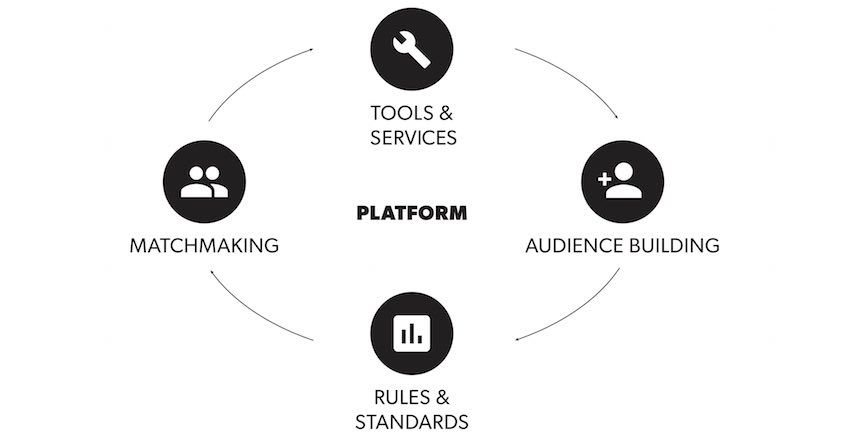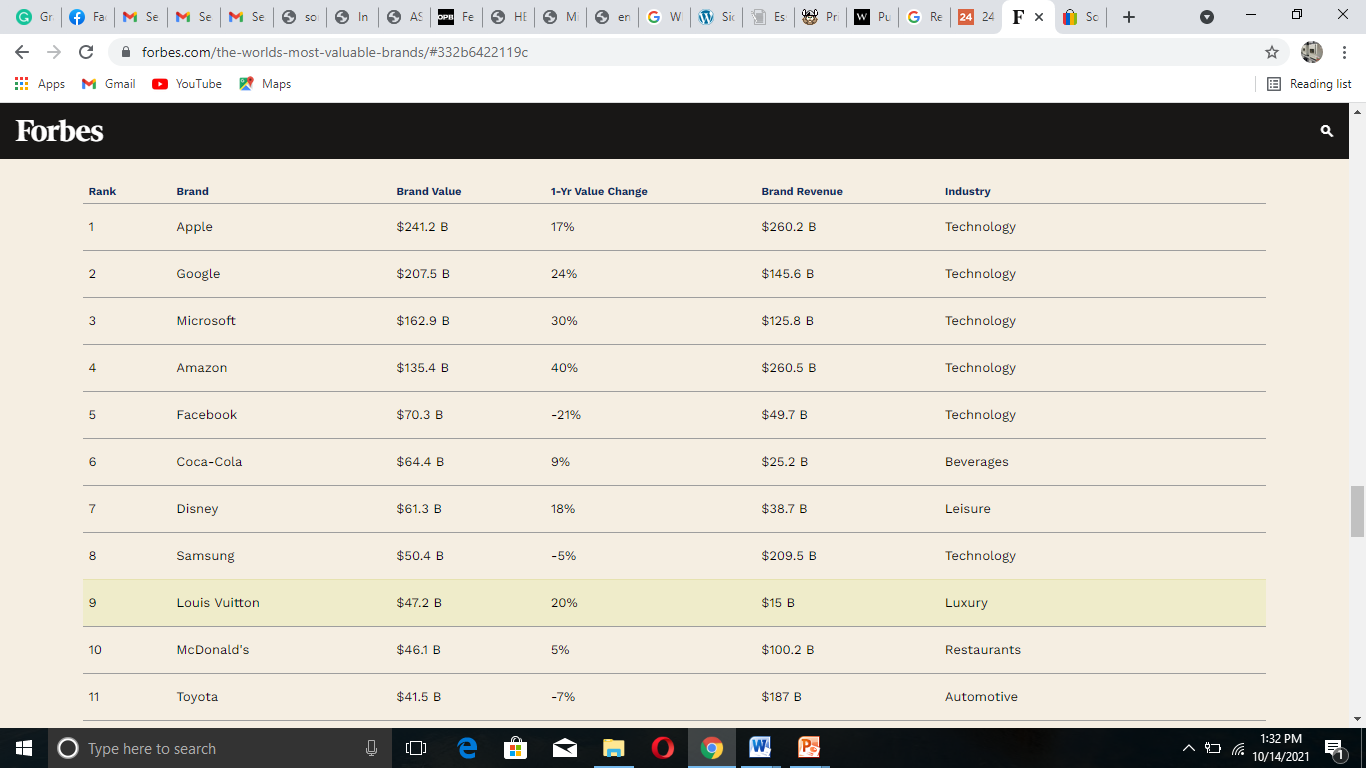Introduction
In the last two decades, the world has experienced a rapid change in business and economics, with new start-ups becoming global, multimillion, and multinational corporations within a short time. Indeed, companies like Google, eBay, Facebook, Uber, PayPal, Alibaba, YouTube, Airbnb, Twitter, Amazon, and others are now the dominant brands in the global market, yet they were developed a few years ago. Noteworthy, all these corporations have one thing in common- they are all platform businesses (Frankenberger & Stam, 2020).
So, the question of interest is what platform business is, why it has become so successful within a short period, and what impacts it will have on global business and economics. Arguably, the platform business is a relatively young model but has penetrated multiple fields with great success, despite having multiple challenges and a highly unpredictable future.
History and Emergence of Platform Business Model
To begin with, it is important to review the current literature and existing understanding of the concept of the platform business. By definition, a platform business is a commercial model that allows and facilitates exchanges of services and commodities between two or more groups that are interdependent. These interdependent are usually consumers, producers, and traders. Unlike conventional, linear businesses, platform businesses do not create and control inventory directly through the supply chain (Frankenberger & Stam, 2020).
Indeed, platform businesses do not own the means of production. Instead, their function is to create the means of production through which producers and consumers conduct trade and meet their needs. The idea is to facilitate exchanges through the reduction of costs of transactions and enabling externalized innovation. However, the modern platform business model is wholly dependent on technology, and its history is related to that of Internet technology.
However, it is worth noting that before the advent of Internet technology, platform economies existed and have been there for thousands of years. According to Zhao et al. (2019), in ancient Greece, the exchange of grains was conducted through platforms by groups that did not create value but facilitated trade in markets. Similarly, historical accounts show that in ancient China, there were groups known as ‘matchmakers’ whose business was to help men to find spouses for marriage at a fee. In ancient Rome, there were bazaars and auction houses that traded in goods that they did not produce or handle, but facilitated trade between consumers are producers.
In the 20th century, there emerged platform business models such as those in shopping malls and auction houses that used brick-and-mortar locations where they facilitated exchanges without their involvement in the production process. The term ‘platform business’ is slightly different as it implies the facilitation of exchanges by decentralizing the network of parties devoid of the brick-and-mortar locations in the transactions. Therefore, the history of the platform business in this sense is quite recent, as it starts in the late 20th century.
In the late 20th century, the emergence of Internet technology facilitated the viability of large-scale transaction platforms because of improved communication and connectedness. In the mid-1990s, eBay and Craiglist became the first large start-ups to take advantage of this new model and started what was to become the online market. Myspace emerged at the turn of the new millennium and became the forerunner of modern social media and online corroboration and communication platforms.
Between 2000 and 2010, the development of Internet technology, along with the improvement of computer technologies and the emergence of smartphones, facilitated the establishment of various start-ups that quickly became large corporations (Zhao et al., 2019). The financial dynamics of the time can also be considered a force that worked with Internet technology to facilitate platform business.
Specifically, after the global financial crisis of 2007-2009, new types of businesses emerged and intensively utilized online platforms as well as e-commerce, including labor market and asset-sharing platforms such as TaskRabbit and Airbnb respectively. Social medial platforms such as Facebook, LinkedIn, and Twitter also emerged and started facilitating businesses (Christensen et al., 2016).
At the same time, small start-ups like Alibaba, Amazon, and others quickly became large corporations by utilizing the e-commerce approach, which is basically a platform business model. Consequently, it is evident that the Internet technology and other related innovations are the primary driving factor for platform businesses.
Platform Business Model’s Fields of Operation, Level of Success, and Issues
Every business model involves two sides, the buyer and the seller, which is also common to the platform model. A multi-sided platform is the one that bring together two or more distinct types of users while also facilitating business transactions between them. Similarly, Mcintyre and Srinivasan (2017) define multi-sided platforms as the interfaces that mediate business transactions between two or more parties.
An important thing to note is that value creation in the multi-sided model used by platform businesses is dependent on enabling the transactions between the different sides. According to Zhao et al. (2019), each side in the network seeks the core benefit of accessing participants on the other side. E-commerce is a good example of the multi-sided platform business model as it involves facilitating consumer-to-consumer as well as business-to-consumer sales.

Amazon, eBay, and Alibaba are good examples of such as a business model as they create value by attracting participants to join the network, accomplishing matches between potential buyers and sellers, and facilitating value-creation exchanges through a transactional architecture. In addition, the organizations establish the rules, terms, standards, and conditions that must apply in the business and which all the parties must follow (Chu & Manchanda, 2016).
In this sense, eBay has been providing customers and buyers with architecture that facilitates transactions between the buyers and the sellers of various products and services, yet the company is not in any way involved in the production process. Moreover, the company sets standards, terms, and rules that the buyers and sellers must follow.
Furthermore, it is worth noting that the platform business model has penetrated and exists in many business lines and sectors. The major sector that has seen a surge in the number of companies involved in platform business is retail as it is the field that involves multiple transactions. On one side, retailers want to reach out to the largest number of consumers as possible to increase their sales and revenue (Demir et al., 2017). On the other side, consumers want to meet their needs by accessing different products from different manufactures and producers at affordable prices, in good quality, at any time, and without the need to travel to obtain the products.
Therefore, these consumer needs cannot be fully met by one or producers or retailers. Rather, there is need for a large network that involves multiple retailers dealing with goods from different producers and the consumers. This network, however, cannot be created in the traditional way because geographical barriers will impede. Consequently, platform businesses like eBay, Amazon, and Alibaba come in handy to solve the problem by establishing an online network of the various parties involved (Eckhardt et al., 2018). In their e-commerce platforms, they allow retailers and producers to display their products and a large number of customers to view and access their details, regardless of their geographical locations. This model also applies to consumer services, with various platform businesses providing connections in the same manner.
In the consumer service field, there a network of consumers, providers, and retailers who form establish a ready business environment for companies to utilize and create value. In the same way that the platform business in the consumer goods sector operate, companies like Freelancer and others have established online networks that facilitate consummate matches between the service providers and consumers. Such services as content creation, video and game sales, software development, and others are traded online through these e-commerce platform businesses (Demir et al., 2017). Evidently, there is a great level of freedom for the parties involved in the multi-sided platforms as both the consumers and providers can easily communicate without geographical, time, and other restrictions. This freedom is credited with the success of the business model.

Conclusion
As noted above, the success of the business model is attributed to the freedom provided by the multi-sided platforms and networks. In essence, the business model is highly flexible and allows even small start-ups with limited capital to venture and establish networks within a short time. Indeed, most of the companies that have succeeded in the platform business were small startups.
For instance, Facebook, Amazon, Alibaba and others were start-ups that took the advantage of the e-commerce’s flexibility to establish large networks that allowed them to make huge profits within a short time. Indeed, by 2016, four of the top five companies in the Forbes list of the most valuable brands in the world were platform businesses (Cusumano et al., 2019). In the same way, eleven of the 20 most valuable brands in the list were platform companies. Therefore, it is evident that the model has been highly successful, despite being a relatively young business approach.
References
Christensen, C. M., Bartman, T., & Bever, D. V. (2016). The hard truth about business model innovation. MIT Sloan Management Review, 58(1), 30-41. Web.
Chu, J., & Manchanda, P. (2016). Quantifying cross and direct network effects in online consumer-to-consumer platforms. Marketing Science, 35(6), 870-893. Web.
Cusumano, M. A., Gawer, A., & Yoffie, D. B. (2019). The business of platforms: Strategy in the age of digital competition, innovation, and power. Harper Business.
Demir, R., Wennberg, K., & McKelvie, A. (2017). The strategic management of high-growth firms: A review and theoretical conceptualization. Long Range Planning, 50(4), 431-456. Web.
Eckhardt, J. T., Ciuchta, M. P., & Carpenter, M. (2018). Open innovation, information, and entrepreneurship within platform ecosystems. Strategic Entrepreneurship Journal, 12(3), 369-391. Web.
Frankenberger, K., & Stam, W. (2020). Entrepreneurial copycats: A resource orchestration perspective on the link between extra-industry business model imitation and new venture growth. Long Range Planning, 53(4), 101872. Web.
McIntyre, D. P., & Srinivasan, A. (2017). Networks, platforms, and strategy: Emerging views and next steps. Strategic Management Journal, 38(1), 141-160. Web.
Zhao, Y., Von Delft, S., Morgan-Thomas, A., & Buck, T. (2020). The evolution of platform business models: Exploring competitive battles in the world of platforms. Long Range Planning, 53(4), 101892. Web.
